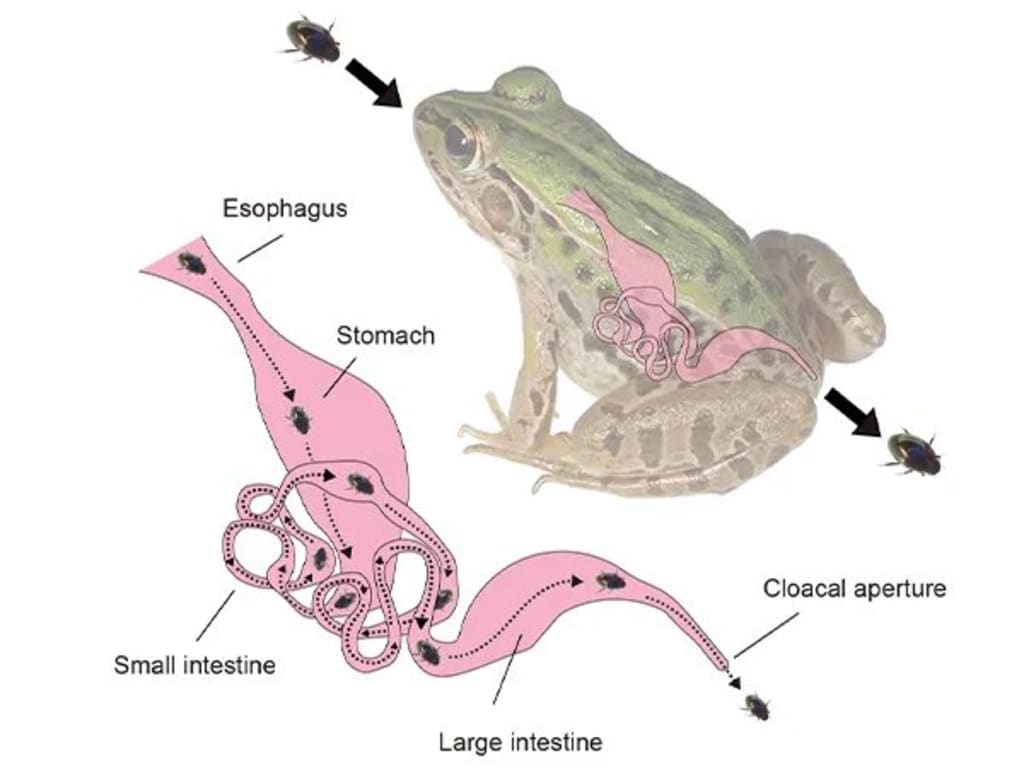The Incredible Escape Artist: The Japanese Beetle's Daring Digestive Feat
Animal's mystery

Nature is full of astonishing and often unbelievable phenomena, but few are as remarkable as the escape act performed by a certain Japanese beetle. This tiny insect has developed an extraordinary survival mechanism: when eaten by a frog, it manages to traverse the amphibian's digestive system and emerge unscathed from the other end. This blog post explores the fascinating world of this beetle, its unique survival strategy, and the broader implications for our understanding of predator-prey dynamics in nature.
The Japanese Beetle: A Brief Introduction
The beetle in question belongs to the genus *Regimbartia*, specifically *Regimbartia attenuata*. These beetles are relatively small, typically measuring a few millimeters in length, and are found in various regions of Japan. Despite their unassuming appearance, *Regimbartia attenuata* has developed one of the most remarkable escape mechanisms in the animal kingdom.
The Great Escape: How It Happens
The journey begins when a frog swallows the beetle. Under normal circumstances, being eaten by a predator like a frog would be a death sentence for most insects. However, *Regimbartia attenuata* has a trick up its sleeve. Upon entering the frog’s stomach, the beetle remains active and starts making its way through the digestive tract.
What sets this beetle apart is its ability to navigate the hostile environment of the frog's gastrointestinal system. It resists digestive enzymes and contractions that would typically break down and process its body. In an astonishingly short period, sometimes within as little as six minutes, the beetle reaches the end of the digestive tract and makes its daring exit via the cloaca, the common exit for the digestive, urinary, and reproductive tracts in amphibians.
The Science Behind the Escape
Researchers have conducted studies to understand the mechanisms behind this extraordinary escape. In one notable experiment led by ecologist Shinji Sugiura from Kobe University, beetles were fed to frogs in controlled conditions. Observations revealed that *Regimbartia attenuata* could survive this journey without significant injury, re-emerging from the frog’s body and continuing its life as though nothing had happened.
One hypothesis is that the beetle's hard exoskeleton provides a degree of protection against the frog's digestive processes. Additionally, the beetle's ability to move through the digestive tract quickly is crucial. This rapid transit minimizes the time it spends exposed to potentially harmful digestive fluids.
Implications for Predator-Prey Dynamics
The escape strategy of *Regimbartia attenuata* has significant implications for our understanding of predator-prey interactions. Traditionally, it was believed that once prey is ingested by a predator, the outcome is invariably fatal for the prey. However, this beetle's remarkable survival mechanism challenges that notion.
This phenomenon suggests that some prey species have evolved highly specialized adaptations to escape even after being consumed. It highlights the dynamic and ever-evolving arms race between predators and their prey, where each side continuously develops new strategies for survival and counter-survival.
Broader Ecological and Evolutionary Significance
The survival strategy of *Regimbartia attenuata* also raises intriguing questions about the evolutionary pressures that lead to such adaptations. What environmental conditions and predatory threats prompted the development of this remarkable escape mechanism? How widespread are similar adaptations in other prey species?
Furthermore, this discovery adds to the growing body of evidence that animal behavior and survival strategies can be incredibly complex and sophisticated. It underscores the importance of continued research into the natural world to uncover these hidden marvels of adaptation and survival.
Conclusion
The tale of the Japanese beetle *Regimbartia attenuata* and its daring escape from the digestive tract of a frog is a testament to the ingenuity of nature. This tiny beetle's ability to survive what should be a fatal encounter offers a glimpse into the incredible adaptations that have evolved over millions of years.
As we continue to explore and study the natural world, stories like that of *Regimbartia attenuata* remind us of the vast complexity and wonder that exist in even the smallest creatures. They challenge our assumptions about predator-prey relationships and inspire a deeper appreciation for the resilience and adaptability of life on Earth.
In the end, the Japanese beetle’s great escape is more than just a quirky natural oddity. It is a profound example of nature’s ingenuity and the endless possibilities that exist within the web of life. So, the next time you hear about a seemingly miraculous survival story, remember the tiny beetle that could, navigating its way through the belly of a beast and emerging victorious on the other side.
About the Creator
Enjoyed the story? Support the Creator.
Subscribe for free to receive all their stories in your feed. You could also pledge your support or give them a one-off tip, letting them know you appreciate their work.






Comments
There are no comments for this story
Be the first to respond and start the conversation.